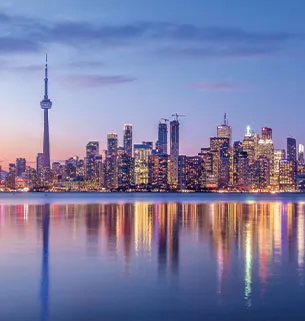Americans are good and angry—and rightly so.
Unemployment remains painfully high at 9.7%, and the total “underemployment” rate approaches 17%. The country faces a monstrous deficit, with little sign of improvement ahead. Meanwhile, the people most responsible for this crisis, Wall Street bankers, are again making huge, undeserved bonuses.
No wonder every public opinion survey says voters want to “throw the bums out” in November. And indeed, Washington has much to answer for in this fiasco.
But the more I look at it, the more I conclude that the government actually did its job in saving the financial system and helping spur an economic recovery.
Policy makers certainly could have done some things a lot better. But without the moves they made, the financial system may have collapsed and unemployment would be far worse than it is now.
That’s right: The people you love to hate—Federal Reserve chairman Ben Bernanke, Treasury secretaries Hank Paulson and Timothy Geithner, and Presidents Bush and Obama—may actually deserve a few words of praise.
The Troubled Asset Relief Program (TARP), the economic stimulus plan, and especially the Fed’s many actions to cut interest rates and flood the system with liquidity worked together to prevent the apocalypse we all feared a year ago.
That’s not just me talking (and for readers who may wonder, no, I don’t work for the government); it was the finding of three reputable economic forecasting firms, loaded with PhDs and the most sophisticated economic models around.
New York Times economics columnist David Leonhardt flagged this recently when he noted that all three firms—Macroeconomic Advisers, IHS Global Insight, and Moody’s Economy.com—estimated that the much-maligned stimulus plan has saved a net 1.6-1.8 million jobs so far, and could keep 2.5 million Americans from losing their jobs by the end of 2010.
So, instead of the 8.4 million jobs lost since December 2007, we’d be looking at close to 11 million unemployed by late this year. The current unemployment rate would be 10.4% instead of 9.7%, according to a survey of leading economists taken by The Wall Street Journal.
Those same economists polled by the Journal “estimated that the stimulus added one percentage point to growth in 2009; they forecast gross domestic product would expand 3% this year, compared with 2.2% in the absence of stimulus.”
And 38 out of 54 believed the stimulus “boosted growth and mitigated job losses, while six said the legislation had a net negative effect,” the Journal reported.
“I don’t think there’s any question the recession ended at the same time the stimulus was providing its maximum benefit to the economy,” Mark Zandi, chief economist of Moody’s Economy.com told me this week.
Zandi had reservations about the way the package was designed. Who didn’t?
“I would have made it bigger,” he says. “I would have had a payroll tax holiday for the last three months of 2009.”
But ultimately, he says, “it worked. It did what it was supposed to do. That’s clear or will become evident as time goes on.”
Also clear is that the Fed’s policies worked. During the crisis, the central bank pulled out all the stops—emergency lending at the discount window, cutting short-term interest rates to zero, flooding the system with cash. The Fed has purchased nearly $2 trillion in debt.
The economists polled by the Journal said the Fed’s actions “likely played a bigger role in pulling the economy out of its tailspin” than the stimulus package did.
Economists Allen Sinai and Paul Edelstein of Decision Economics estimate “the Fed's actions boosted GDP growth by 1.9 percentage points in 2009 and would add 3.3 points this year.”
|pagebreak|
Finally, there’s TARP. It was originally designed to buy toxic assets from troubled banks, but Secretary Paulson quickly realized that wasn’t practical, given the difficulties of pricing bad loans. So, he turned it into a recapitalization plan for the banks and other troubled firms.
The Fed’s zero interest rates and the suspension of mark-to-market accounting gave the banks some breathing room to rebuild their balance sheets, and the “stress tests” administered by Secretary Geithner helped rebuild confidence in the system. The banks then raised billions of dollars in private capital, and most of them have paid back their TARP money—sometimes at a nice profit for taxpayers.
That’s why the program could cost us far less than the $700 billion Congress reluctantly approved in 2008. In testimony late last year, Secretary Geithner said TARP may add “at least $200 billion less [to the deficit] than was projected in” August, or below $150 billion altogether.
The bottom line: The government’s actions saved the economy and the financial markets at a cost much lower than many of us feared.
We’re not out of the woods yet. Economists say unemployment will remain above 9% this year. And there could be new softness as the effects of the stimulus fade. Plus, who knows if there’s another Greece waiting in the wings?
Also, some government initiatives have flopped. Mortgage relief was a bad idea that hasn’t worked. And lending, especially to small businesses, remains weak. The stimulus bill itself skimped on much-needed infrastructure projects and was too loaded with Congressional pork. Fannie Mae and Freddie Mac are still cash drains with no relief in sight. And this whole rescue may come to naught if regulatory reform doesn’t tackle “too big to fail.”
And this group of policy makers has much to answer for. Chairman Bernanke backed predecessor Alan Greenspan’s push to keep rates too low for too long back in the last decade, which was instrumental in creating the crisis, and he still appears to be clueless about it.
Tim Geithner presided over the Federal Reserve Bank of New York for five years, and backed the free-for-all deregulation that unleashed Wall Street on the rest of us. He also supported the outrageous bailout of Goldman Sachs and other AIG creditors at 100 cents on the dollar, as did Bernanke and Paulson.
Paulson, of course, was chief executive officer of Goldman Sachs Group (NYSE: GS) when that firm was making billions of dollars from packaging and selling some of the same kinds of toxic securities that blew up later. And his refusal to save Lehman Brothers from collapse precipitated the most dangerous phase of the crisis.
President Bush’s tax cuts and unfunded spending programs unraveled the budget surplus he inherited from President Clinton. But by most accounts, he was cool and well-organized when the worst financial crisis since the Great Depression took place in the midst of an intense election campaign.
President Obama made a huge mistake by turning over the stimulus bill to Democrats in Congress. But Congress did pass it, and he signed it.
So, yes, many of these people may have been cleaning up the mess they helped create. But their actions also helped avert catastrophe.
That may not be much to cheer about, given the pain many Americans are feeling now. But it’s probably all government could or should have done under the circumstances. Often, the perfect is the enemy of the “good enough.”
So, choose your favorite devil—Bernanke, Paulson, Geithner, Obama, or Bush. And then please, give him his due.
Howard R. Gold is executive editor of MoneyShow.com. The views expressed here are his own.





















